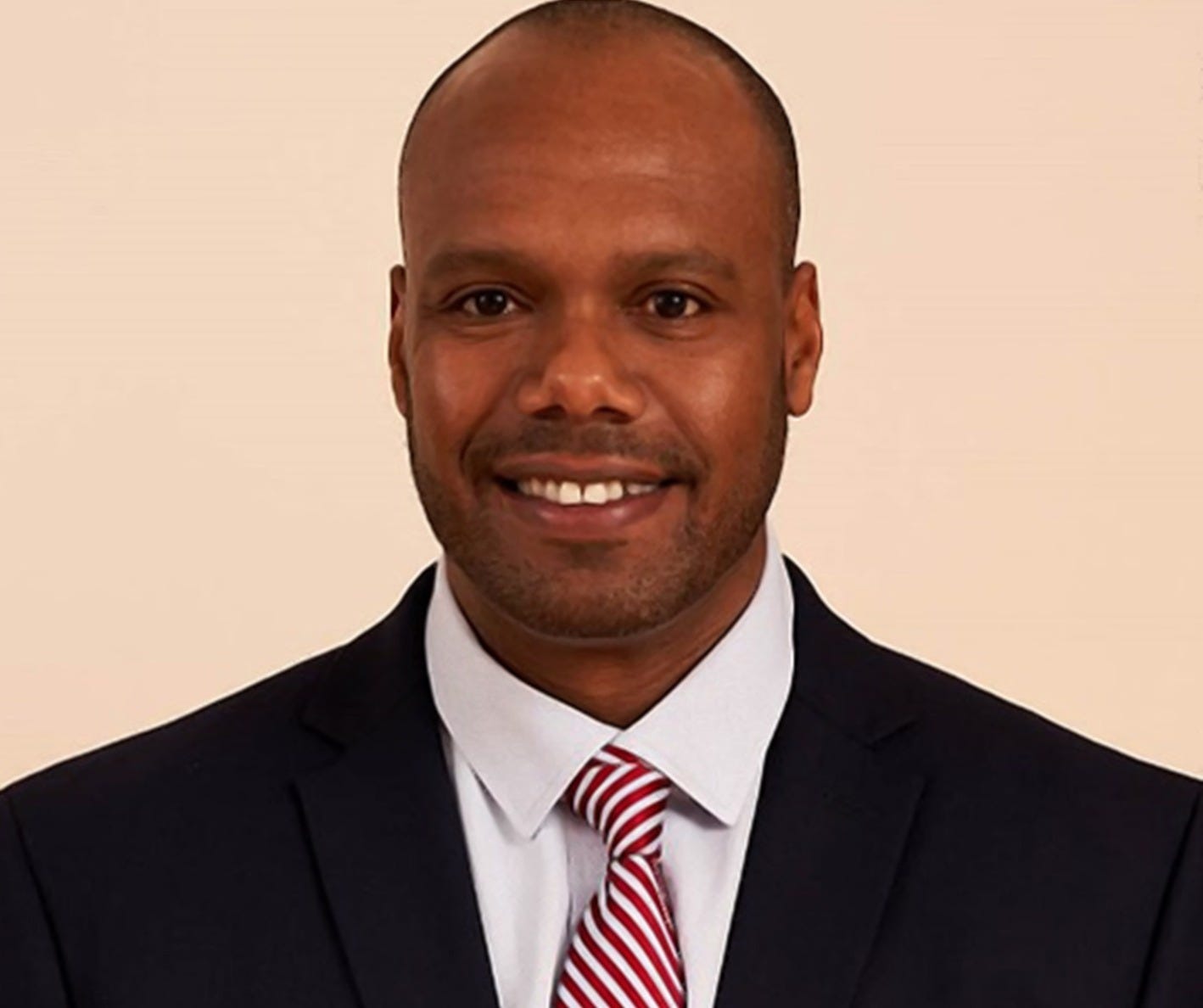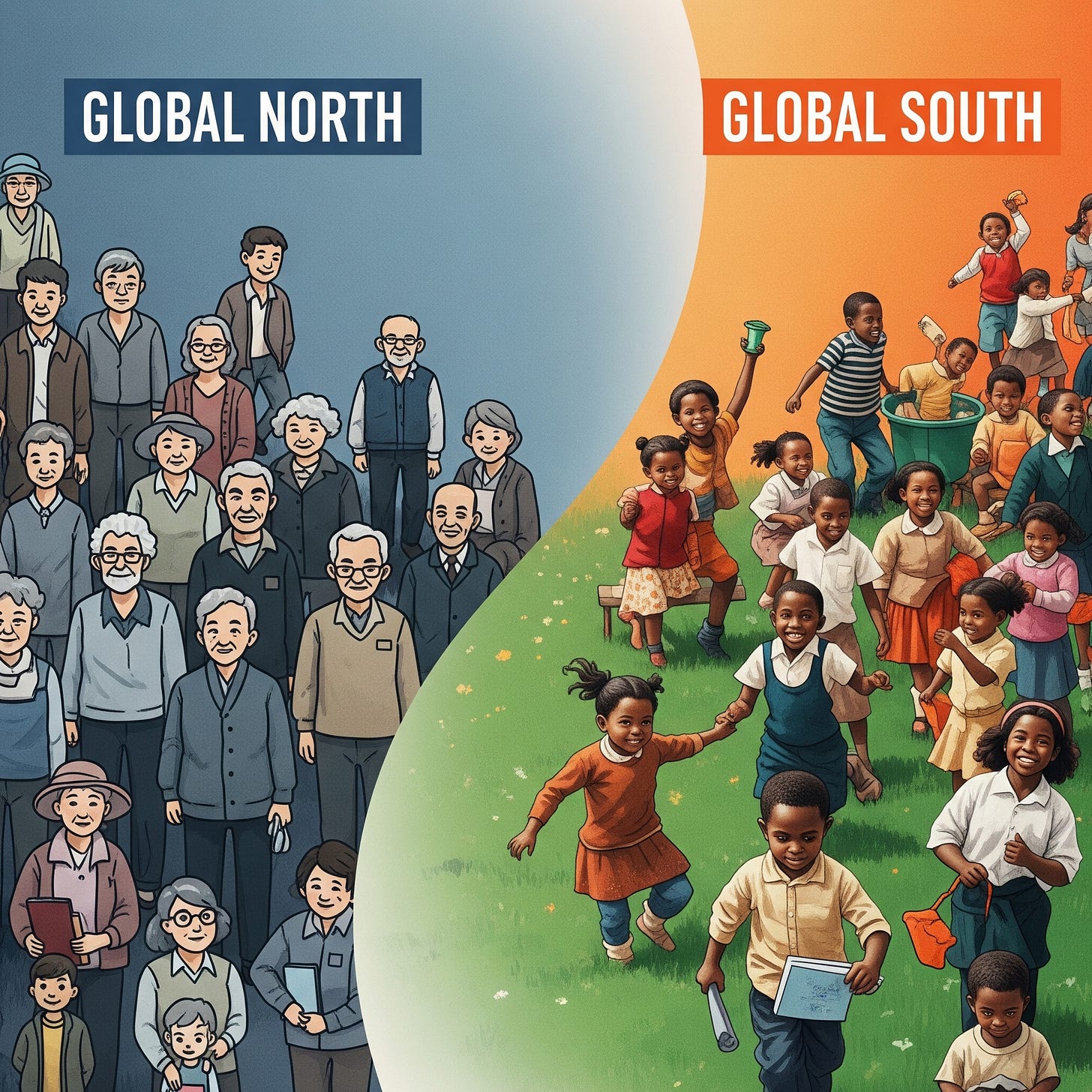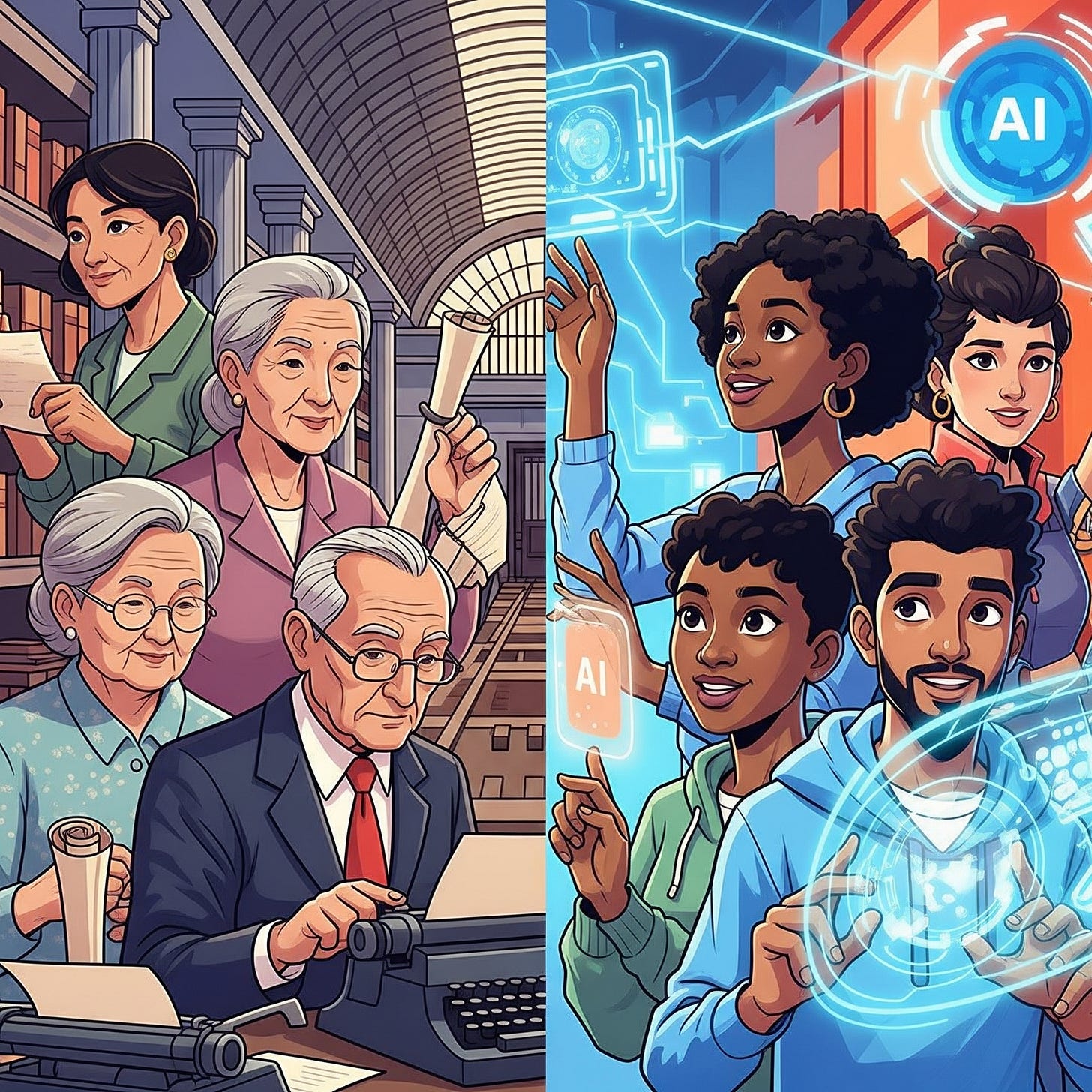4IR: the Youthful Shape of the Rest of the 21st Century
Will the next global solution come out of Africa or somewhere else in the youthful Global South in the 4IR (the Fourth Industrial Revolution)? Probably!
"Intelligence knows no geography. Innovation isn’t limited by skin color or passport. The only thing missing here has been access—and belief. Too many brilliant young Africans grow up consuming solutions created by their peers in other countries. We want to flip that dynamic. Why shouldn’t a young person in Africa create the next global solution?”
Madou Sylla, Executive Chairman, Nexten Summit (nextensummit.com)
The demographic landscape of the 21st century presents a striking dichotomy: a youthful, burgeoning Global South stands in stark contrast to an aging, often shrinking Global North. This demographic divide is not merely a statistical curiosity; it underpins profound differences in philosophical outlook, developmental trajectories, and the very approach to the Fourth Industrial Revolution (4IR). As Madou Sylla, Executive Chairman of the Nexten Summit, eloquently put it, "Intelligence knows no geography. Innovation isn’t limited by skin color or passport. The only thing missing here has been access — and belief. Too many brilliant young Africans grow up consuming solutions created by their peers in other countries. We want to flip that dynamic. Why shouldn’t a young person in Africa create the next global solution?” This sentiment encapsulates the immense, often untapped, potential residing in the Global South, poised to redefine the future if given the necessary access and belief.
Statistical Realities: A Tale of Two Demographies
The numbers paint a clear picture of this demographic divergence.1 The Global South, particularly sub-Saharan Africa, is experiencing a significant "youth bulge." For instance, the median age in many African countries is below 20, with a substantial portion of the population under 25. High birth rates continue to fuel this growth, leading to a rapidly expanding workforce and consumer base. India, another prominent Global South nation, also boasts an incredibly large and young demographic. This demographic dividend presents an enormous potential for economic growth, provided these young populations are educated, skilled, and gainfully employed.
Conversely, the Global North is characterized by rapidly aging populations and declining birth rates, often falling below replacement levels. Countries like Japan and many in Western Europe face a median age well over 40, with a growing proportion of their citizens in retirement. This trend results in a shrinking working-age population, placing immense strain on social security systems, healthcare services, and overall economic productivity. The demographic pyramid in these regions is inverting, with fewer young people supporting an increasing number of elderly dependents.
Philosophical Divergence: Outlooks on the Future
These demographic realities foster distinct philosophical outlooks on the future. In the Global South, the youthful demographic often translates into a pervasive sense of optimism, dynamism, and a forward-looking perspective. There is less attachment to legacy systems and established ways of doing things, fostering an environment ripe for disruption and innovation. Young populations, often digitally native, are eager to embrace new technologies as tools for empowerment and progress, seeing them as direct solutions to long-standing societal problems rather than potential threats to existing structures. Madou Sylla's assertion that "Intelligence knows no geography" resonates deeply here; the focus is on unlocking inherent human potential, unburdened by historical constraints.
In contrast, the Global North's aging populations often lead to a more cautious and reflective societal mindset. The emphasis shifts towards preserving existing social welfare systems, managing the fiscal implications of an aging workforce, and ensuring intergenerational equity. Debates frequently revolve around the sustainability of pensions, the rising costs of healthcare, and the societal implications of labor shortages. While innovation is still highly valued, there's a greater tendency to prioritize risk mitigation and controlled integration of new technologies, often out of concern for potential job displacement or the disruption of established social norms. The philosophical lens here is often one of maintaining stability and adapting to gradual change, rather than embracing radical transformation.
Developmental Pathways: Leapfrogging vs. Adaptation
The demographic divide also dictates vastly different developmental pathways, particularly in the context of the 4IR. For the Global South, the youthful population offers an unparalleled opportunity for "leapfrogging" traditional development stages. A large, adaptable workforce, coupled with the widespread adoption of mobile technology, can drive rapid economic growth. Young innovators are uniquely positioned to develop solutions tailored to local needs, bypassing outdated infrastructure and systems. For example, mobile banking and off-grid renewable energy solutions have flourished in parts of Africa, directly addressing gaps in traditional financial and energy infrastructure. This directly embodies Sylla's vision: "Why shouldn’t a young person in Africa create the next global solution?” The focus shifts from merely consuming foreign technologies to actively creating and exporting innovative solutions that resonate globally. The challenge, however, lies in providing the massive investment required for education, digital infrastructure, and job creation to harness this potential and prevent a youth bulge from becoming a source of instability or brain drain.
The Global North, conversely, faces the developmental challenge of adapting its mature economies to an aging workforce. Labor shortages necessitate increased automation and, in some cases, managed immigration. While still leading in fundamental research and development, the pace of societal adoption of disruptive technologies can be slower due to concerns about job security and the need to retrain an older workforce. The fiscal burden of supporting a growing elderly population can divert resources from investments in future-oriented sectors. The emphasis is less on creating entirely new foundational systems and more on optimizing and integrating new technologies into existing, complex industrial and social structures.
Conclusion: Access, Belief, and a Flipped Dynamic
The demographic trends of the Global South and Global North present a compelling narrative of contrasting futures. The Global South, with its entrenched poverty and other issues, balanced with the optimism of a vibrant and expanding youth population, holds the potential to be a powerhouse of innovation and economic dynamism in the 4IR. Madou Sylla's powerful words serve as a rallying cry: the intelligence and innovative spirit are abundant, unconstrained by geographical boundaries or social constructs. The critical missing ingredients are "access—and belief."
By investing in education, fostering robust digital infrastructure, and cultivating an ecosystem that empowers young people to be creators rather than mere consumers, the Global South can indeed "flip that dynamic." This shift is not only vital for the prosperity and human flourishing within these nations but also for the collective advancement of humanity. The next global solutions, whether in AI, sustainable development, or social innovation, may very well emerge from the youthful, energetic heart of the Global South, proving that intelligence and innovation truly know no borders.









